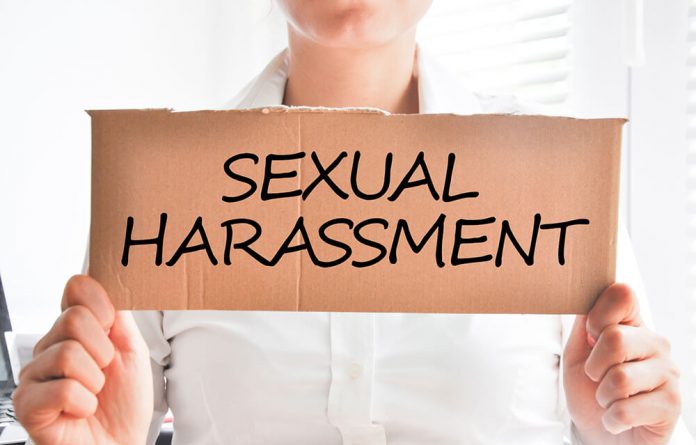This article has been written by Pradnya Vishal Gangurde pursuing Diploma in Advanced Contract Drafting, Negotiation and Dispute Resolution and edited by Shashwat Kaushik.
This article has been published by Sneha Mahawar.
Table of Contents
Introduction
“I measure the progress of a community by the degree of progress which women have achieved”.
–Dr. B.R. Ambedkar
From the above quote by Dr. Babasaheb Ambedkar, we will all agree that if we want a community or a country to develop, women’s empowerment is of utmost importance. India is developing rapidly in different sectors; lots of initiatives for educating the female child are being taken and we can even see the results as we have many women working today. Besides being highly educated, they have also made their careers in sports, theatre, acting, and modelling. They can be seen working in an organised as well as an unorganised sector. Efforts are being made so that women get equal opportunities, face no discrimination or sexual harassment, and have a safe workplace environment.
Background
An important piece of legislation in India The Prevention of Sexual Harassment of Women at Workplace Act 2013 aims to prevent and address sexual harassment faced by women in the workplace. So the question arises: What was the need to enact such a law? And prior to 2013, how were workplace sexual harassment cases dealt with? To gain a better understanding of this topic, we need to go back in time and understand the Bhanwari Devi case, a landmark case in India that brought attention to the prevalent issue of sexual harassment.
In the year 1992, Bhanwari Devi, a Dalit social worker in Rajasthan who was employed as “saathin” in the government’s Women’s Development Programme, was gang raped by five men for her efforts to prevent child marriage. She faced many obstacles, threats, and delays in the legal proceedings. The accused in this case were found not guilty; however, her case led to the formation of the Vishaka Guidelines (Vishaka and Ors. vs. State of Rajasthan and Ors. (1997)). The Vishaka and other women’s rehabilitation groups from Rajasthan and Delhi decided to fight for Bhanwari Devi’s justice, and they filed a Writ Petition for enforcing the fundamental rights of working women under Articles 14, 19 and 21 of the Constitution of India in the Supreme Court. The Supreme Court stated that the incident highlighted the dangers that working women may face as well as the depravity that can result from sexual harassment and the urgent need to protect them in the absence of legislative safeguards by alternative mechanisms to meet this social need.
The Supreme Court noted that because there was no domestic law that addressed sexual harassment of women at work, to guarantee gender equality, the right to work with human dignity in Articles 14, 15, 19(1)(g) and 21 of the Constitution and protections against sexual harassment, international conventions and norms are crucial.
Hence, by virtue of Article 253, which enables the Parliament to enact laws for implementing international conventions, the ‘Convention on the Elimination of All Forms of Discrimination against Women’ (CEDAW), an international legal agreement that calls for nations to end all forms of discrimination against women and girls and to advance their equal rights, played a significant role in the formulation of the Vishaka Guidelines. Prior to these guidelines, offenders were penalised through Sections 354 and 509 of the Indian Penal Code, 1860; these sections did not specify sexual harassment. The POSH Act was enacted to provide legal protection and redressal mechanisms for women facing sexual harassment at their workplace. Before the POSH Act, sexual harassment at the workplace was addressed through Vishaka guidelines.
Now that we have laws in place to regulate behaviour and protect women, does making these laws guarantee that such crimes won’t take place? The answer is no.
It is prudent, given the recent protests of our wrestlers against sexual harassment, that we create awareness and redress the issue sensitively. There are laws to regulate the crime but there is a lack of awareness among females as well as male employees regarding what behaviour can be considered sexual harassment at the workplace and about the redressal mechanisms.
What comes under sexual harassment
It is essential that every individual as well as the organisation be aware of the behaviour that is considered sexual harassment. It is the responsibility of the employer to ensure that all employees are aware of what constitutes sexual harassment, the rules to be followed and the process of redress. Experiencing sexual harassment brings mental agony to the woman subjected to it.
The Supreme Court of India, through the Vishaka Guidelines, has defined what can be considered sexual harassment at the workplace. As per the guidelines
Sexual harassment includes such unwelcome sexually determined behaviour (whether directly or by implication) as:
- physical contact and advances;
- a demand or request for sexual favours;
- sexually coloured remarks;
- showing pornography; or
- any other unwelcome physical, verbal or non-verbal conduct of sexual nature.
From the foregoing, it can be inferred that the following behaviour constitutes sexual harassment.
- Whenever an individual touches, hugs, pinches, or brushes against a person’s body without permission, any such physical contact that is unwanted and makes a person upset, powerless or depressed can be considered unwelcome physical contact and advances.
- Whenever an individual in an authoritative position demands or requests sexual favours in exchange for certain benefits, such as promotion, a rise in salary, job security, or other advantages.
- Offensive and suggestive remarks, jokes or innuendos, statements or comments of a sexual nature that are inappropriate or teasing related to a person’s body, appearance, or sexual orientation are considered sexually coloured remarks.
- Obscene pictures, movies, videos, and posters are considered pornographic material; showing such pornographic material that offends someone is also sexual harassment.
- Sexual harassment can occur through WhatsApp messages, SMS, and official e-mails.
What is a workplace
A place where an individual works to earn his livelihood is called a workplace. As mentioned in the POSH Act, the workplace includes:
- Organisations that are partially or fully owned, controlled, or funded by the government, the local authority, a government firm, a government corporation, or a cooperative society.
- The organisations operating in the private sector may be an undertaking, enterprise, institution, establishment, society, trust, non-governmental organisation, unit, or service provider engaged in financial, commercial, professional, vocational, educational, entertainment, industrial, health services, or manufacturing goods or providing services.
- Hospitals or nursing homes.
- Facilities that are used for sports competitions or sports events, such as sports institutions, stadiums or sports complexes, whether residential or not, are used for training, sports or other related activities.
- The locations that employees visit in the course of employment, including the transport facilities supplied by the employer for such visits.
- Residential place or a house.
- The workplace also includes the unorganised sector; it refers to businesses that are owned by individuals or independent workers involved in the manufacture, distribution, or provision of any form of service, and the number of employees working there is less than 10.
After the outbreak of Covid-19 pandemic, many organisations allowed their employees to work remotely. It became a new workplace for the employees; they connected with their colleagues through phone calls and video calls (Google Meet or Zoom Call); hence, we cannot deny the possibility of harassment on these platforms. Sexual harassment can take place even when the female employee is working from home through online platforms. Therefore, the Act can be applied to work from home and consider it a workplace.
In Sanjeev Mishra S/O Shri Shri … vs. The Disciplinary Authority And.., (2021), the Rajasthan High Court made some observations that we can rely on. The petitioner, Sanjeev Mishra, submitted a writ asking for the chargesheet to be overturned and set aside. Since both the petitioner and the complainant were employed in different states, the petitioner claimed that the charge sheet was filed outside of their jurisdiction.
The Court stated that, in the current digital world, the workplace for employees working in the bank who have previously worked in the same branch and then shifted to various branches that may be situated in separate states needs to be treated totally as one workplace on a digital platform. Therefore, it would fall under the definition of being harassed in a common workplace even if a person engages in harassment of a woman who may be posted in a different state through a digital platform.
The important takeaway from this verdict is that a common workplace can include digital media.
Employee awareness
Many times, not only the employer but also the employee, may it be male or female, are unaware of what constitutes sexual harassment and that action can be taken against the offender. In the year 2015, the Government of India Ministry of Women and Child Development published a “Handbook on Sexual Harassment of Women at Workplace”, the purpose of which was to provide employers with a basic understanding of sexual harassment at the workplace. It says that it is obligatory on the part of every employer to provide a safe working place for a female employee; it is their responsibility to restrain, stop and provide remedial measures for such issues.
In order to raise awareness, employers must:
- Frame and properly convey the policies of the organisation to address the problem.
- Organise POSH trainings for staff members once a year to advise them of the actions that constitute sexual harassment. Training helps employees gain insight into potentially harassing activity and how it affects the victim. Through training, employees are well-informed of their legal rights and obligations. It provides information about the organisation’s policies and, in the case of the victim who has to file a complaint, the procedure for doing so, i.e., a complaint process.
- Women employed in the unorganised sector, however, cannot participate in such training; hence for them, information can be provided by Gram Panchayats, Panchayat Samiti, Zila Parishads, Gram Sabhas, Women’s Groups, urban local bodies like municipal corporations, or municipalities.
Grievance redressal mechanism
Having rules and regulations and their awareness does not reduce or guarantee a decline in the crime rate; that’s the reason we have a redressal mechanism. There needs to be prompt action upon receiving complaints and the process should be confidential. The Act has made provisions for the effective redressal of the issues.
Internal Complaints Committee
The Act prescribes the formation of the Internal Complaints Committee (ICC) for the organisation with 10 or more employees through written order and the Local Complaints Committee (LCC) is formed to address the sexual harassment cases of the organisations that have less than 10 employees and no Internal Complaints Committee.
The members of the ICC shall constitute:
- A senior level female employee as a chairperson, and if such female employee is not available, then any female employee from another office, unit, department or workplace of the same employer can be appointed.
- A minimum of two members must be employees who are devoted to the cause of women or have legal expertise or experience in social work.
- One member should be from NGO or association that is devoted to the cause of women or a person who is familiar with the issues of sexual harassment.
The members of LCC shall constitute:
- The chairperson of the LCC should be an eminent female social worker who is committed to the cause of women.
- One member from among the women who work in the district’s block, taluka, tehsil, ward, or municipality.
- Two members from among such NGO, association or persons devoted to the cause of women or knowledgeable about the problems relating to sexual harassment are required; at least one must be a woman, and one must have a background in law or have legal knowledge.
- An “ex officio” member will be an officer who deals with the district’s social welfare or women and child development.
Process for filing complaints
The process for filing a complaint as per Section 9 of the POSH Act is as follows:
- The complaint of sexual harassment must be filed in writing with the ICC or LCC within a period of three months from the date of occurrence of the incident and if there are a series of incidents within three months from the latest incident. The ICC or LCC, depending on the situation, can extend the deadline up to 3 months if it is satisfied that the circumstances were such that they prevented the woman from filing a complaint.
- The presiding officer or any member of the Internal Committee or the Chairperson or any member of the Local Committee, as applicable, shall provide necessary support to help the aggrieved woman document the complaint in writing if she is not able to do so.
- If the aggrieved woman, due to physical or mental incapacity, death or otherwise, is unable to make a complaint, her legal heir or any other person authorised by law can make a complaint on her behalf. According to the Handbook on Sexual Harassment of Women at Workplace, the following individuals may file a complaint on behalf of the aggrieved woman:
- A relative, friend, co-worker, officer of the National Commission for Women or State Commissions for Women, or any person who is aware of the incident with the written consent of the victim can file a complaint if the victim is physically incapable.
- If the victim is mentally incapable, her relative, friend, special educator, qualified psychiatrist or psychologist, guardian, or authority under whose care she is receiving treatment or care or any person who has information about the incident, jointly with others, can file a complaint.
- A person who is aware of the incident can file a complaint on behalf of the complainant with the written consent of her legal heir in the event of her death.
- If the victim, due to any other reason, is unable to file a complaint, any person who has knowledge of the incident that happened can file a complaint with her written consent.
Upon filing a complaint with the committee, the complainant has the option of an informal or formal resolution process. If she opts for an informal mode of resolution, the Act has made provision for conciliation in Section 10 for settling the complaint before the formal inquiry is initiated. The Internal Committee or the Local Committee shall take steps to settle the matter; there will be no monetary settlement in conciliation; copies of the settlement should be provided to both settling parties; and no further inquiry will be conducted. According to the provisions of the POSH Act, the inquiry will be conducted by the Internal Committee or the Local Committee if the complainant chooses a formal process of redressal. Within 90 days, the Internal Committee or Local Committee must conclude its investigation.
Punishment for sexual harassment
There needs to be some repercussions for the wrongdoing by a person. If, after the completion of the inquiry by the committees, the allegation against the respondent is proven, they must recommend to the employer:
- To take action as stated in the relevant policy or service rules, the action may include a warning to terminate.
- Deduction of an amount from the salary or wages of the respondent to be paid to the complainant or to her legal heirs.
- Whenever there are no service rules drafted for the organisation, punishment may consist of disciplinary action, including an apology in writing, reprimand, warning, censure, withholding promotion or pay raise or increment, termination, counselling, or community service.
We cannot deny the fact that there is always a possibility of a false complaint. The Act has provisions for penalties for false or malicious complaints and false evidence. The committee may suggest taking action against the complainant in accordance with service rules if the committee’s investigation reveals that the accusations made against the respondent are untrue or malicious or if the complainant has provided any counterfeit or deceptive documents.
Conclusion
In our country, we find women from different classes (higher, middle, and lower). They may be educated or uneducated, stepping out of their houses daily for work. We are aware that we live in a patriarchal society, though it is changing, but the change is extremely slow. Managing both family and work is a difficult task, but in spite of that, she takes care of multiple things at a time and tries to do everything perfectly. This multitasking creates a huge amount of physical as well as mental stress. Hence, it is her right to have a safe workplace environment where she faces no discrimination, feels secure, has a positive atmosphere and, above all, no sexual harassment. If she is not provided with all these, it is a violation of her fundamental rights of gender equality and the right to life and liberty. We need to create awareness among the women and encourage them to come forward and complain. Society needs to change its way of thinking, and they need to support the victim and not restrain her and put restrictions on her. Most of the time, incidents are not reported due to shame, family pressure, stigma, fear and many more reason’s. Family support is the first step if she is facing harassment; secondly, the environment at work should also be supportive. It needs to be conveyed to her that it was not her fault. Prompt action in such cases is the key and never should the need arise where women have no other option other than to quit their job.
References
- https://indiankanoon.org/doc/1031794/
- https://wcd.nic.in/sites/default/files/Handbook%20on%20Sexual%20Harassment%20of%20Women%20at%20Workplace.pdf
- https://www.indiacode.nic.in/bitstream/123456789/2104/1/A2013-14.pdf
- https://indianexpress.com/article/explained/explained-law/posh-act-sexual-harassment-workplace-8591018/#:~:text=The%20Sexual%20Harassment%20of%20Women,in%20cases%20of%20sexual%20harassment.
- https://www.thehindu.com/news/national/explained-the-indian-law-on-sexual-harassment-in-the-workplace/article66854968.ece
- https://yourstory.com/2017/07/sexual-harassment-workplace-reporting
Students of Lawsikho courses regularly produce writing assignments and work on practical exercises as a part of their coursework and develop themselves in real-life practical skills.
LawSikho has created a telegram group for exchanging legal knowledge, referrals, and various opportunities. You can click on this link and join:
Follow us on Instagram and subscribe to our YouTube channel for more amazing legal content.
 Serato DJ Crack 2025Serato DJ PRO Crack
Serato DJ Crack 2025Serato DJ PRO Crack












 Allow notifications
Allow notifications



